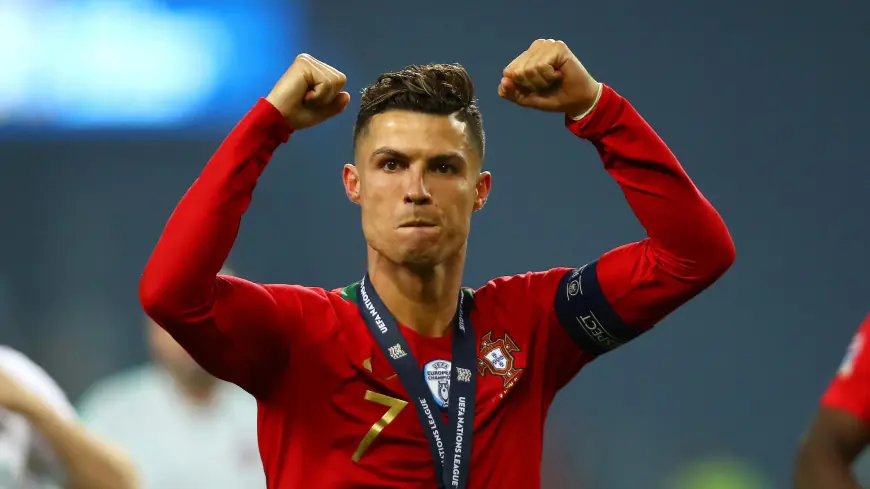The Tactics Behind the Game: Soccer Strategy Explained

Soccer, often referred to as “the beautiful game,” is loved by millions around the world. While casual viewers enjoy the flow, the goals, and the drama, seasoned fans understand that beneath the surface lies a deep well of tactical complexity. Behind every pass, every run, and every formation is a strategy designed to outwit the opponent. Soccer is not just a game of physical prowess—it’s a game of the mind.
In this article, we’ll break down the essential strategies and tactical principles that shape modern soccer, giving you insights that can change how you watch the game—whether at the stadium, on television, or through Soccer Streams from platforms like Totalsportek.
Understanding Formations
One of the first things you’ll notice when analyzing a team’s tactics is their formation. This refers to how players are arranged on the field and can give you a strong clue about their playing style.
Classic Formations:
-
4-4-2: Balanced and traditional, offering stability across all areas.
-
4-3-3: Common in attacking teams, with three forwards to apply pressure.
-
3-5-2: A flexible approach that adds strength in midfield.
-
4-2-3-1: Popular in modern play for combining defensive protection with creative support behind a striker.
Teams choose formations based on the strengths of their players and the weaknesses of their opponents. Watching these setups through Soccer Streams on Totalsportek allows fans to follow subtle shifts during the match that commentators may overlook.
The Importance of Possession
Possession-based soccer emphasizes controlling the ball to dictate the flow of the game. Teams like FC Barcelona under Pep Guardiola revolutionized this style, making short, crisp passes to slowly dismantle the opposing defense.
In contrast, some teams prefer a counter-attacking strategy, absorbing pressure and then launching rapid attacks when the opponent is vulnerable. This is often used by teams with fast wingers and clinical finishers.
While watching Soccer Streams from Totalsportek, you can spot these styles in action by observing how often a team maintains the ball and how they transition between defense and attack.
Pressing and Defensive Lines
Defense in soccer isn't just about staying back and blocking shots. High-level teams employ pressing systems to force errors and regain possession. There are various types:
-
High Press: Defenders and forwards push up aggressively to disrupt opponents in their own half.
-
Mid-Block: Teams stay compact in midfield, waiting for the right moment to intercept.
-
Low Block: Often used when protecting a lead, with all players dropping deep.
The effectiveness of pressing depends on timing and coordination. When watching a game on Soccer Streams, especially through Totalsportek, you can observe these tactics more clearly by focusing on how the team moves together in defense.
Transitions: From Defense to Attack
The moments when a team switches from defense to attack—or vice versa—are called transitions. These brief windows can be decisive.
A well-coached team knows how to quickly capitalize on a turnover, turning defense into a scoring opportunity. Similarly, they know how to reorganize quickly to prevent counter-attacks.
Transition play often separates good teams from great ones. It's one of the reasons viewers enjoy watching matches via Soccer Streams on Totalsportek—the speed and spontaneity of transitions are often better appreciated without broadcast delays or over-analysis.
Player Roles and Responsibilities
Within each formation and tactical setup, individual player roles are carefully defined. Some key roles include:
-
Box-to-Box Midfielder: Covers large areas, supporting both attack and defense.
-
False Nine: A forward who drops deep to pull defenders out of position.
-
Inverted Winger: A wide player who cuts inside to shoot with their stronger foot.
-
Sweeper Keeper: A goalkeeper who plays outside the box to support the defense.
These nuanced roles evolve over time. For instance, watching elite players like Kevin De Bruyne or Joshua Kimmich on Soccer Streams via Totalsportek showcases how fluid and adaptable modern roles have become.
The Manager’s Influence
Tactical identity often mirrors the philosophy of the manager. Some focus on possession and control, others on aggression and pace. A coach’s system must reflect the strengths of the squad while also being adaptable.
Managers like Jürgen Klopp, Diego Simeone, and Carlo Ancelotti offer vastly different visions of how soccer should be played. When using Soccer Streams from Totalsportek, watching different teams week-to-week gives you a sense of how coaching philosophies affect formations, tempo, and substitution patterns.
Tactical Adjustments During a Match
Tactics aren’t static. A good manager adjusts during the game, based on scoreline, opponent behavior, or player fatigue.
Some common in-game adjustments include:
-
Switching formations mid-match (e.g., from 4-3-3 to 3-4-3).
-
Substituting players to change the tempo or add defensive cover.
-
Targeting specific opposition weaknesses (e.g., a slow fullback).
If you’re watching through Soccer Streams using Totalsportek, keep an eye on how players reposition after substitutions or halftime. These shifts often foreshadow goals or pivotal moments.
Set Pieces: The Hidden Game Changer
Corners, free kicks, and even throw-ins can be decisive. Teams spend hours rehearsing these scenarios, developing routines that maximize scoring chances.
While casual fans often overlook set pieces, they are vital. The best teams design complex routines that involve dummy runs, decoy movements, and rehearsed finishes.
With Soccer Streams on Totalsportek, you can rewatch key moments to study how set-piece goals are created, highlighting the tactical preparation behind what may seem like simple plays.
The Role of Data and Analytics
Modern soccer increasingly relies on data. GPS tracking, video analysis, and performance metrics help coaches refine tactics and monitor player performance.
Analysts provide managers with detailed information on opponents, allowing for customized strategies. For example, knowing an opposing goalkeeper struggles with low shots to the left can influence where strikers aim.
While fans can’t access all the behind-the-scenes data, watching with tactical awareness—especially through platforms like Totalsportek’s Soccer Streams—allows viewers to form educated opinions and predictions.
Conclusion: Watching with a Tactical Eye
Understanding tactics transforms how you experience soccer. You begin to appreciate the why behind every movement, not just the result. It becomes a mental chess match played on a 100-yard board.
The next time you tune into a match through Soccer Streams on Totalsportek, challenge yourself to look beyond the ball. Observe the shape, spacing, pressing triggers, and off-the-ball runs. Watch how the backline holds or shifts, how wingers create overloads, or how a lone striker drags center-backs wide to create space for midfielders.
Soccer is not only a game of goals—it’s a game of geometry, psychology, and anticipation. Tactics are the invisible engine driving every successful team. And once you learn to see them, you’ll never watch a match the same way again.
What's Your Reaction?
 Like
0
Like
0
 Dislike
0
Dislike
0
 Love
0
Love
0
 Funny
0
Funny
0
 Angry
0
Angry
0
 Sad
0
Sad
0
 Wow
0
Wow
0


















































